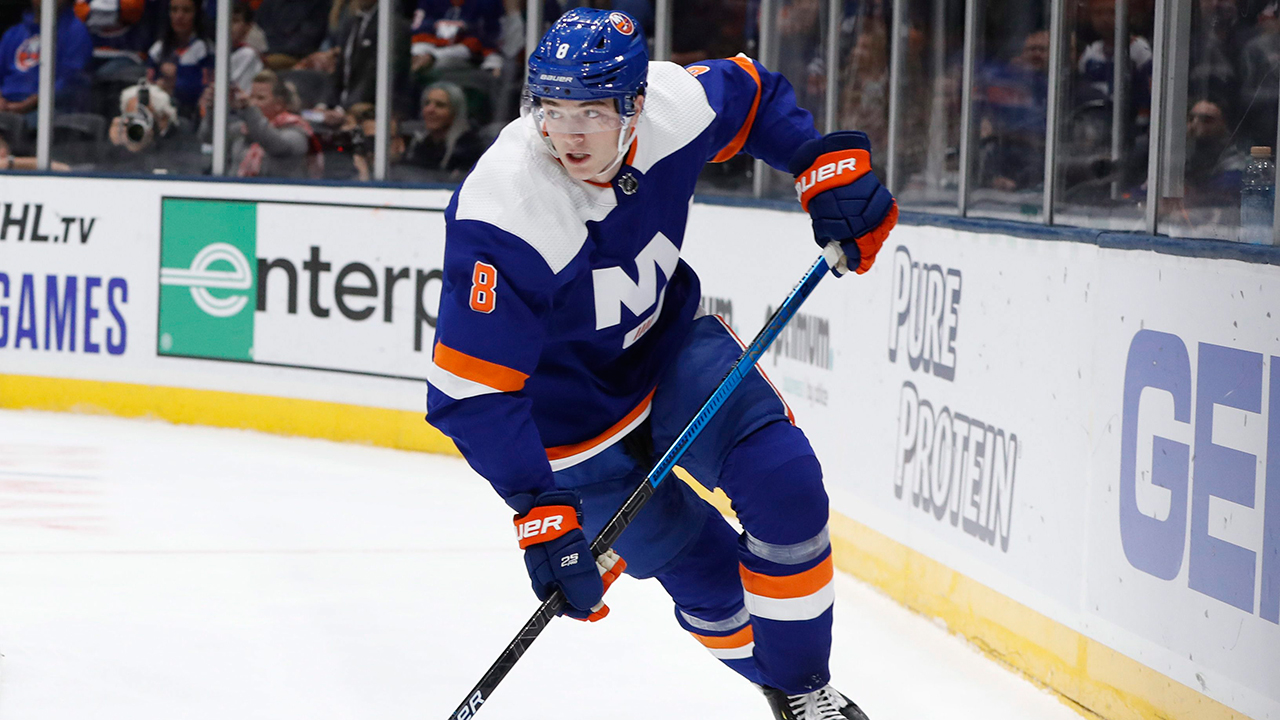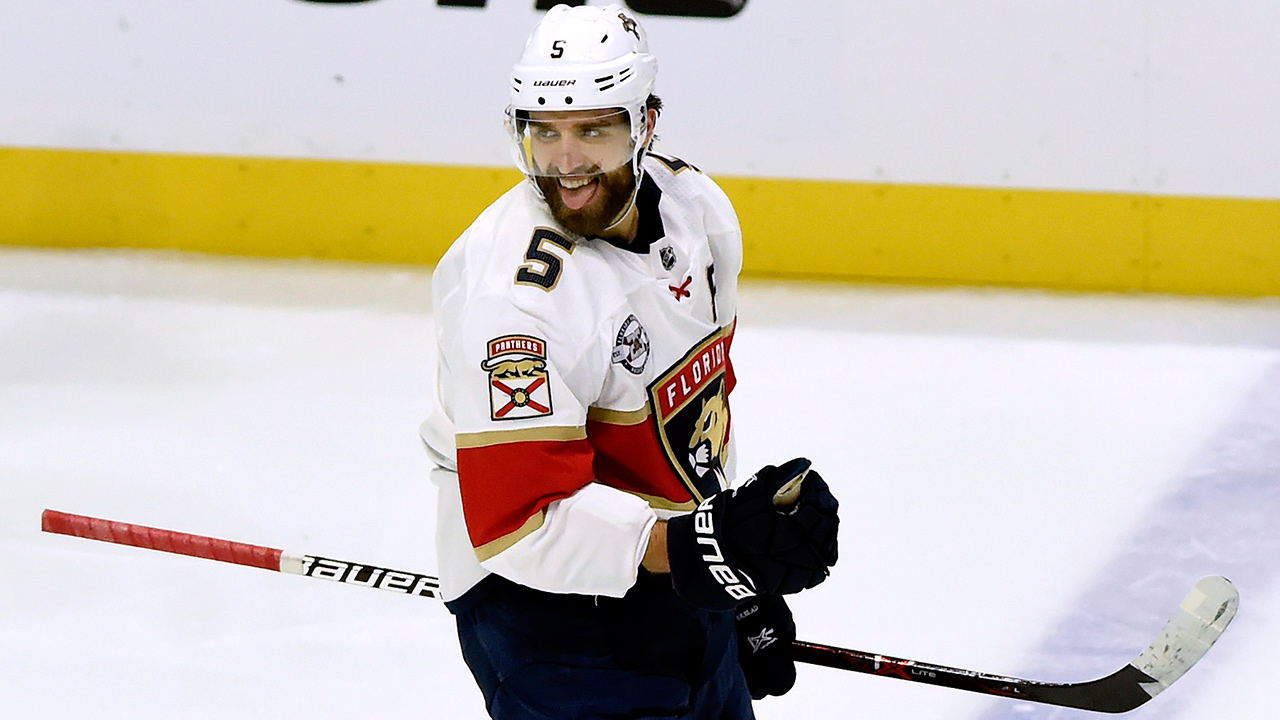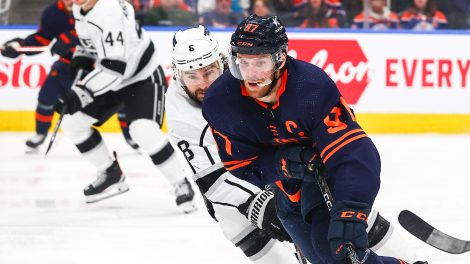It’s amazing how much one season can change expectations, but a 20-goal, 72-point season from Morgan Rielly in 2018-19 has completely altered the anticipated offensive output for the 25-year-old defenceman.
Before a four-point performance that saw Rielly tie Rick Vaive’s Leafs record for the most assists in a regular season second period, there were a few whispers that Rielly was having a slow start — with a lowly five points in six games. That sounds pretty crazy, but when you consider that four of those five points came on the power play, and Rielly has yet to score a goal, it makes a bit more sense, even if it’s slightly unreasonable on the face of it.
A lot has been made of Rielly’s pairing with newcomer Cody Ceci, as Ceci has a long history of poor play in tough minutes, so there’s an implicit expectation that things won’t work out. It’s early in the season, but we can take a look at how the two have played together compared to Rielly’s career year alongside Ron Hainsey last season.

The sample sizes are small, but so far this season the Rielly-Ceci pairing has been incredible at controlling play in front of both creases, but has really struggled everywhere else.
Rielly has typically played extremely tough matchups under Mike Babcock with partners who don’t necessarily help him out much. One of the reasons I wasn’t sold on him being a Norris candidate last season was that almost across the board the Leafs were worse off at 5-on-5 when Rielly was on the ice than off of it.
More likely than not, that wasn’t a function of Rielly’s own play. But in order to be a premier defenceman in the NHL, you need to do more than just produce points, and the best defencemen can carry poor partners. Erik Karlsson carried Filip Kuba and others en route to Norris Trophies. P.K. Subban in his prime carried Hal Gill and Josh Gorges. Drew Doughty carries a bunch of players most hockey fans haven’t heard of.
[snippet id=4167285]
So despite the situation, Rielly’s underlying numbers in differential form were not impressive last season. Typically, you would take the trade-off of being outshot while controlling high danger chances from the inner slot, but the sample size with high danger chances this early in the season is very small, even for a high event team like the Maple Leafs.
What that means is the confidence we should have in Ceci and Rielly’s early-season dominance at inner slot differentials being something sustainable is lower than what it should be in shots or shot attempts since those happen more frequently and will have less randomness involved in a small sample. And unfortunately, those numbers are the less impressive ones.
For what it’s worth, though, when looking into the inner slot shots Rielly’s differential is improved by becoming more low-event than before. The Leafs are giving up just five high danger chances against every 60 minutes Rielly is on the ice at 5-on-5 this year, compared to 8.3 last season. This is a notable defensive improvement if it lasts, but it has come at the loss of some offence for the team while he’s out there as well.
The question then becomes whether that drop in offence is due to Rielly being less involved in creating chances, or another factor entirely? Let’s dig into Rielly’s individual offensive performance.

Rielly’s offensive performance compared to last season is extremely consistent, and in fact he’s even more involved in scoring chances than he was in 2018-19. He’s getting more chances himself, creating a little more for his teammates, gaining the offensive zone just as often and as easily as he did last season, so what’s the issue?
Rielly’s offensive zone passing is down slightly from last season and his passes to the slot have dropped as well. One of Rielly’s primary assets as an offensive defenceman is that he’s one of the NHL’s highest-quality playmakers from the blue line and this makes it seem as though he’s not been performing at his best in that department early this season. But is he actually passing the puck less often and shooting more?
Last season Rielly attempted 26.01 offensive zone passes every 60 minutes at 5-on-5, while this season he’s attempting 27.03, so he’s actually passing slightly more often, but his completion rate has dropped from 59.9 per cent in 2018-19 to just 50 per cent this year.
That decline in completion rate extends to slot passes as well, where Rielly is attempting a whopping nine per 60 minutes compared to 6.75 last season, but only completing 27.8 per cent of them compared to 47.3 per cent last year.
[snippet ID=3322139]
The explanation for that can involve a multitude of factors; the sloppiness of early-season hockey, teams focusing more on taking away Rielly’s passing lanes after a career season, Rielly himself not playing as well, bad luck, or teammates just not receiving enough passes in a small sample.
The overall takeaway though, is that Rielly hasn’t struggled to produce offence individually. It’s true that almost all of his assists at even strength came in one game, but that’s just random distribution more than an indication Rielly was struggling up to that point.
Rielly is still without a goal of his own this season and, again, he’s getting more scoring chances than he was last season. It’s true that the Leafs as a whole are producing less offence while he’s on the ice compared to last season, but it doesn’t appear to be Rielly’s doing by any measure. In fact, he’s a model of offensive and transition consistency.
Whether he can carry Ceci throughout the season is up for debate when you look at the differentials, but nothing individually in Rielly’s performance makes me worry about him.
[relatedlinks]








